Importing Alerts Into an Alerts Window
Neovest lets you automatically create alerts in Neovest's Alerts window by letting you import alerts that you have saved in files using programs outside of Neovest.
Files that you may import into Neovest may be created in programs such as Microsoft Excel ® and Microsoft Notepad ®, which let you save files in a comma-, semicolon-, space-, or tab-delimited format.
In order for a file containing alerts to be imported successfully into a Neovest Alerts window, the file must be formatted correctly, according to the following specifications:
The first row of the file may be used for your personal mapping purposes and may contain the following fields: Symbol, High Alert, Low Alert, Volume Alert, and Block Alert (case is not important). Neovest will not recognize any fields other than these specified.
All fields must be separated by a comma, semicolon, space, or tab in a plain text document—or all fields must be separated in individual cells in a spreadsheet and then saved in a comma-, space-, or tab-delimited format.
Note: The order of the fields is not important; however, it is important that you separate the alerts that you wish to import into columns of the same data. For instance, all symbols should be organized into one column, all high alerts should be organized into a separate column, and so on.
Two examples of proper field formatting are as follows:
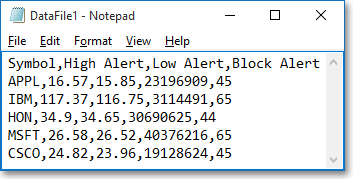
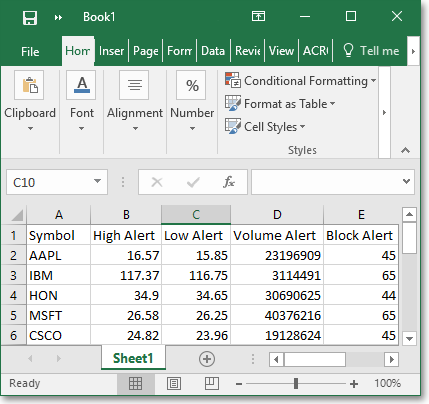
The following instructions explain how you may import a properly formatted file containing alerts into a Neovest Alerts window:
With an Alerts window open on your screen, click the gear icon, located on the far-right of the toolbar.

Click the "Import" icon on the drop-down menu that appears.
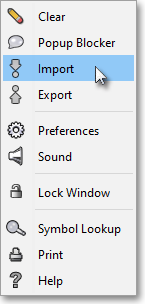
Once the "Import" box appears, click on the "Look In" down arrow to select the location of the file that you wish to import.
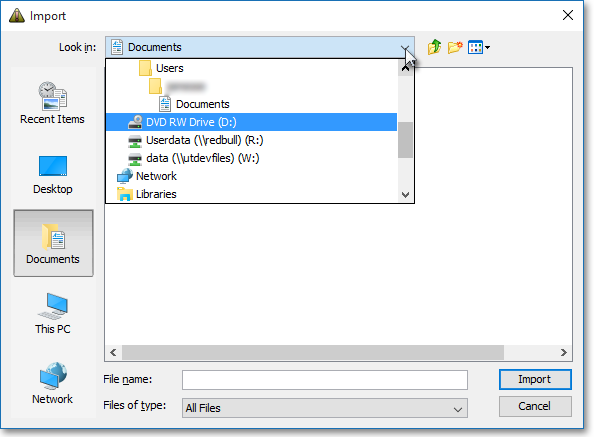
Note: If you are unable to locate the file that you wish to import, you may need to click on the "Files of Type" down arrow and select "All Files." The "Files of Type" drop-down menu lets you control which files are displayed in the "Import" box. Selections in the "Files of Type" drop-down menu range from letting you display "All Files (*.*)" to certain "Text" files with various extensions.
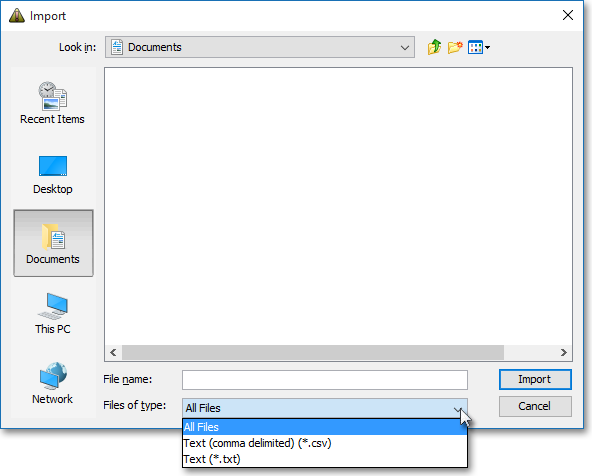
Once you click on the file that you wish to import, click Import.
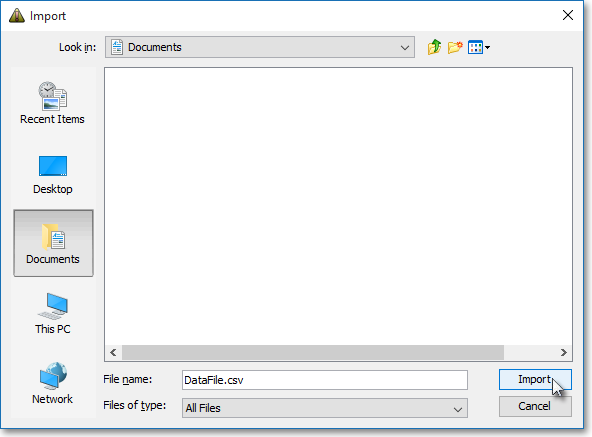
Once the "Import Table" box appears, you may configure the file containing alerts that you wish to import into a Neovest Alerts window.
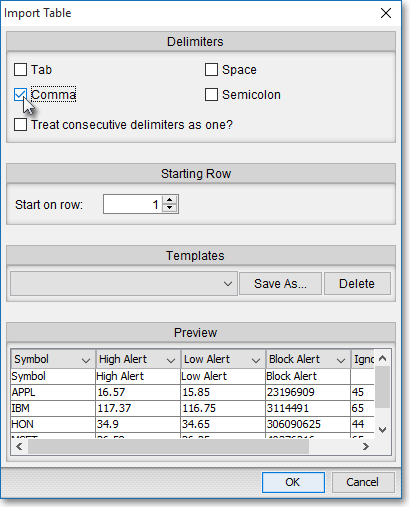
The following table provides descriptions of the features in the "Import Table" box:
| Feature: | Description: |
| Delimiters | Lets you specify the delimiter that you have chosen for the file containing alerts that you wish to import into an Alerts window. For instance, if you have saved the file in a comma-delimited format, then you would check "Comma" in this field. If you have saved the file in a semicolon-, space-, or tab-delimited format, then you may check the selection in this field that is appropriate for your chosen delimiter. If your saved file containing alerts includes multiple delimiters in a row without any alert information in between the consecutive delimiters, then you may select "Treat Consecutive Delimiters As One" and Neovest will recognize only one delimiter instead of the multiple delimiters that appear in consecutive order. If, however, you have intentionally left certain alert information fields blank for personal mapping purposes and, therefore, you have purposely created one or more rows of consecutive delimiters without any alert information in between the consecutive delimiters, then you would not want to select "Treat Consecutive Delimiters As One." Once you select a delimiter for the file containing alerts that you wish to import into an Alerts window, Neovest will separate the alert information into columns in the "Preview" field in the "Import Table" box. Once the alert information is separated into columns, you may specify a category header for each column by clicking on the down-arrow above each column. For instance, you may select "Symbol" for the column that is made up of symbols, "High Alert" for the column that is made up of high alerts, and so on. |
| Starting Row | Lets you select the starting row for the file containing alerts that you wish to import into an Alerts window. For instance, if the file you wish to import has several lines of alert information and you wish to ignore the first row of information in the file (since Neovest does not recognize actual Alerts window-type words such as "High Alert," "Low Alert," and so on), then you may click on the "Start on Row" up-arrow to change the default of "1" to a "2" to ignore your first row of personal mapping information. |
| Templates | Lets you select, save, and delete templates that you have created in the "Preview" field in the "Import Table" box. A "Template" is referred to in Neovest as the row of category headers that you have specified for the columns of alert information that you wish to import into an Alerts window. For instance, once you have chosen a delimiter for the file containing alerts that you wish to import into an Alerts window and Neovest has separated the alert information into columns in the "Preview" field in the "Import Table" box—you must specify a category header for each column (i.e., "Symbol" for the column that is made up of symbols, "High Alert " for the column that is made up of high alerts, and so on). If you have multiple files that you wish to import into an Alerts window and the alert information is in the same order in each file—then you may save the template that you have created for the first file to use in consecutive files that you wish to import into an Alerts window. |
| Preview | Lets you preview the alert information that you wish to import into an Alerts window. Once you select a delimiter for the file containing alerts, Neovest will separate the alert information into columns in the "Preview" field in the "Import Table" box. Once the alert information is separated into columns, you may specify a category header for each column by clicking on the down-arrows above each column. For instance, you may select "Symbol" for the column that is made up of symbols, "High Alerts" for the column that is made up of high alerts, and so on. |
Once you have configured the file containing alerts that you wish to import into a Neovest Alerts window, click OK.
